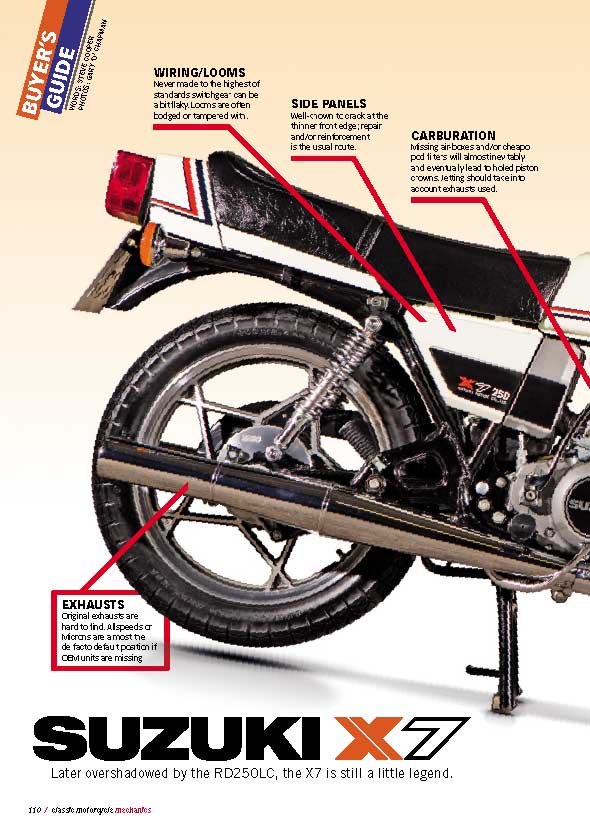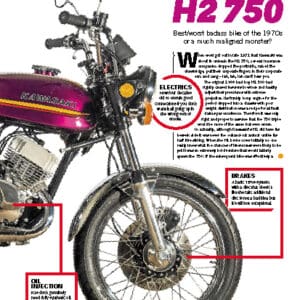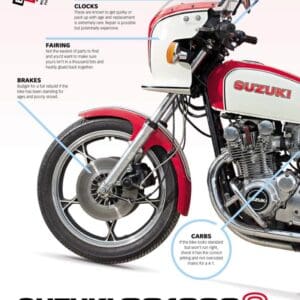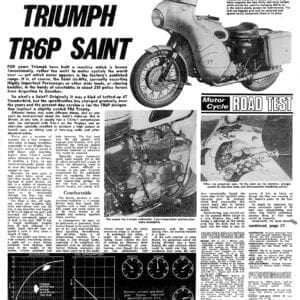Description
Far too often in the world of motorcycles we hear the phrase game-changer. Those two words are supposed to imply the bike in question somehow radically alters the perceived status quo. However, many bikes ascribed such status are, in reality, little more than reworked models. Fortunately the bike in camera this month does truly warrant the sobriquet of game-changer; Suzuki’s seminal X7 represented the first serious challenge for years to the perceived order of things in the 250cc world. Here was a totally new motorcycle that had been designed from scratch and with just one specific aim: to become top dog in the vital learner bike sales league tables. In order to truly appreciate the bike’s significance we need to look at both its ancestors and the period competition. Suzuki rocked the world when it launched the T20 aka the Super Six, or the X6. This was a bike that redefined 250 two-stroke twins. With a moderate makeover in the late 60s the bike became the hugely successful T250 aka Hustler which lasted until 1972 when it was reinvented again as the GT250. Effectively a posh T250 with a disc brake and a Ram Air cowl, the bike swiftly became outpaced and outdated by Yamaha’s RD250. Kawasaki had offered the awesome A1 Samurai and then the S1/KH250 triples leaving Honda to do its own thing with four-strokes. Even if the GT250 was the best-selling learner bike of 1976 it made the grade on price not performance and techno babble.
Advert
 Enjoy more Classic Motorcycle Mechanics reading in the monthly magazine. Click here to subscribe.
Enjoy more Classic Motorcycle Mechanics reading in the monthly magazine. Click here to subscribe.















